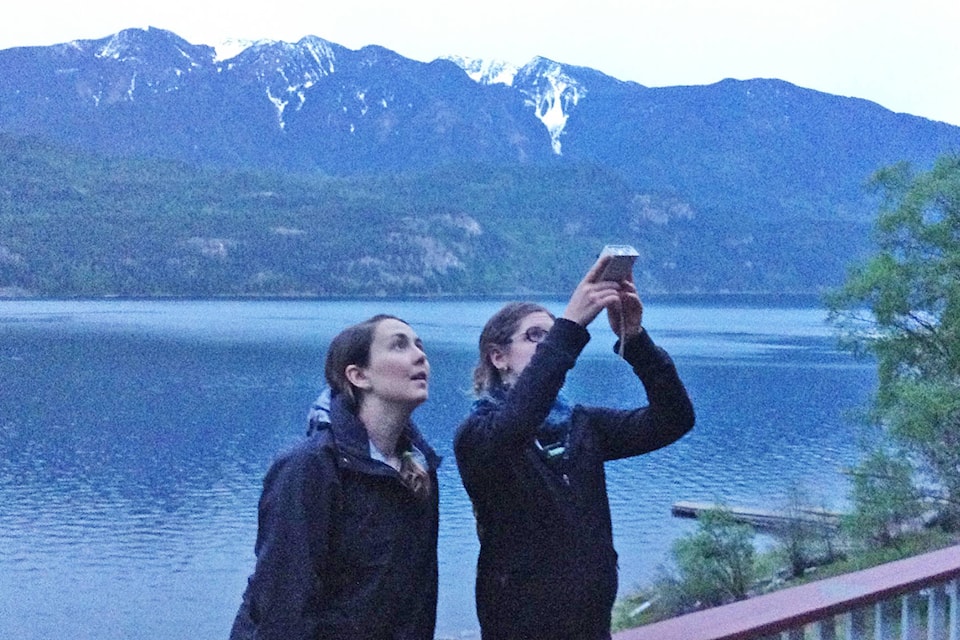Do you have bats in your belfry (or anywhere else)?
If so, the BC Community Bat Program, funded by the Habitat Conservation Trust Foundation, wants you to count them.
Starting this weekend, volunteers across the province will be heading out at sunset to take part in the annual bat count.
Ashleigh Ballevona from Telkwa is the project coordinator for the Skeena region. She said the count is important because the Little Brown Bat found in the area is threatened by a disease that is heading north.
“They are a species at risk,” she said. “White-nose syndrome is a fungal disease that has not been identified in B.C., but it has been identified in Washington State less than 200 kilometres from the B.C. border, so we want to learn more about our bats, as much as possible, get an idea of population numbers before White-nose comes into the province, so we can see if there have been population effects.”
READ MORE: Citizen-science initiative needs volunteers to count B.C. bats
Ballevona said bats have kind of gotten a bad rap in the past, but people are coming around to seeing their benefits.
“Like everything, they have a role to play in the ecosytem,” she said. “Bats are really important because they eat a lot of pest species, so they can eat hundreds upon hundreds of flying insects a night.”
The 2019 count will take place over two periods, the first from June 1 to 21 and the second between July 11 and Aug. 5.
The first period is when it’s just the females, their pups have been born but they’re not flying yet so we get an idea of how many adults there are,” Ballevona said. “Then, the July to August count is when the pups are flying, so we also get a count from that period as well.”
Bat behaviour makes the counting very easy, she explained, because the females return to the same maternity roosts every year and emerge from their colonies to feed every evening at approximately half an hour after sunset (civil twilight) one at a time.
“It’s actually super straightforward,” she said. “You have to know where they’re coming in and out of, whether it’s your roof, or your siding, or a bat house, but you basically just go to that location, stand at a good vantage point where maybe it’s a little bit backlit … and count them as they emerge.”
Last year, Ballevona said, the count in the Skeena region was down to five sites from 11 in 2016 and seven in 2017. She said the decline has been due to bats being excluded from certain sites. For example, the old cadets building in Kitimat, previously home to one of the largest colonies in the province numbering some 2,000 animals, was demolished in 2016. Although bat condominiums were built to replace the roost site, she said she doesn’t know what happened to the population.
READ MORE: Huge bat colony delays demo of building
“In Kitimat, I don’t think the bats have been using the condos, or we haven’t been getting reliable counts from the folks in Kitimat, so I can’t say for certain that the thousands of bats returned to the colony,” she said.
Interest in the Bulkley Valley is good, she said, but because it is a citizen science project, it relies on landowners coming forward.
“I don’t have any public places where people can just go and count, everything’s on private land so that’s why it’s typically done by the landowners,” she said.
“Some people may have bats and they don’t even know because if you’re not looking for them at the right time of the evening, you may not notice that they’re there.”
People who know of any roost sites and/or are interested in participating should contact Ballevona at 1-855-9BC-BATS ext. 19 (toll-free) or email skeena@bcbats.ca.
editor@interior-news.com
Like us on Facebook and follow us on Twitter
